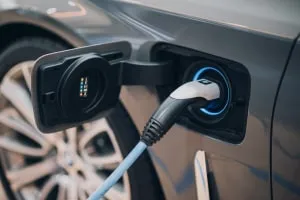
Introduction to Electric Vehicle Technology 
Discover the world of electric vehicle technology and learn how the laws of physics impact the design of any vehicle. Take this course to understand how to calculate the power a motor needs to produce to remain energy-efficient and calculate acceleration and torque. Learn about the drive cycle and battery capacity to prolong the battery’s life. Start this course today and gain the skills needed to pursue a career in automotive design. ▼
ADVERTISEMENT
Course Feature
![]() Cost:
Cost:
Free
![]() Provider:
Provider:
Alison
![]() Certificate:
Certificate:
No Information
![]() Language:
Language:
English
Course Overview
❗The content presented here is sourced directly from Alison platform. For comprehensive course details, including enrollment information, simply click on the 'Go to class' link on our website.
Updated in [June 30th, 2023]
This course, Introduction to Electric Vehicle Technology, provides an overview of the field of electric vehicle technology and how the laws of physics impact the design of any vehicle. Students will learn how to calculate the impact of aerodynamic drag, wind resistance, gradient resistance, and other forces on a vehicle's power needs. Additionally, students will explore the role of the drive cycle in determining energy consumption, as well as important concepts concerning the vehicle's battery, such as battery capacity, depth of charge, and charge and discharge cycles. This course is ideal for those interested in a career in automotive design, as well as those already in the automotive industry as an engineer, automotive technician, or mechanic.
[Applications]
Upon completion of this course, learners will be able to apply their knowledge of electric vehicle technology to design and develop electric vehicles. They will be able to calculate the power needed to overcome forces such as aerodynamic drag, wind resistance, and gradient resistance. Learners will also be able to compute the amount of energy expressed in watts needed to provide a motor with the torque and traction power required to accelerate and reach specific speeds. Additionally, learners will be able to calculate the energy efficiency of a vehicle and understand the role of the drive cycle in determining how much energy a vehicle will consume per kilometre. Finally, learners will be able to calculate battery capacity, depth of charge, and charge and discharge cycles, as well as understand how to prolong the battery’s life and calculate a battery’s operational life.
[Career Path]
Job Position Path: Automotive Engineer
Automotive engineers are responsible for designing, developing, and testing the various components of a vehicle, such as the engine, transmission, brakes, and suspension. They must also ensure that the vehicle meets safety and environmental standards. Automotive engineers must have a strong understanding of physics, mathematics, and engineering principles, as well as a good knowledge of the automotive industry.
The development trend of automotive engineering is towards the development of electric vehicles. As fuel prices increase and as the world’s fossil fuel deposits become depleted, governments worldwide are pushing manufacturers to design and produce more electric vehicles. As a result, car manufacturers are looking for automotive engineers who have a background in electric vehicles. Automotive engineers must have a strong understanding of the principles of electric vehicle technology, such as aerodynamic drag, wind resistance, gradient resistance, torque, and traction power. They must also be able to calculate the amount of energy required to power an electric vehicle and understand the concept of regeneration efficiency.
[Education Path]
The recommended educational path for learners interested in electric vehicle technology is a Bachelor's degree in Automotive Engineering. This degree program typically covers topics such as automotive design, engineering principles, vehicle dynamics, powertrain systems, and vehicle control systems. Students will also learn about the latest technologies in electric vehicles, such as battery technology, electric motors, and regenerative braking. Additionally, students will gain an understanding of the environmental impact of electric vehicles and the regulations and standards that govern their design and production.
The development trend of this degree program is to focus more on the design and development of electric vehicles. This includes the use of advanced technologies such as artificial intelligence, machine learning, and autonomous driving. Additionally, students will learn about the latest advancements in battery technology, electric motors, and regenerative braking. Furthermore, students will gain an understanding of the environmental impact of electric vehicles and the regulations and standards that govern their design and production.
Course Syllabus
Vehicle Dynamics
This module will discuss which physical forces act on a moving vehicle and how to perform calculations that will help determine the power required for an engine to overcome these forces. It will also explain how to calculate the amount of energy that will be consumed by an electric vehicle, depending on driving conditions, to establish design parameters for the electric vehicle.Vehicle Subsystems
This module will discuss the basic functions of the electric vehicle's subsystems, including an introduction to the very heart of the electric vehicle, the battery.Course assessment
Course Provider

Provider Alison's Stats at AZClass
Discussion and Reviews
0.0 (Based on 0 reviews)
Explore Similar Online Courses

Implementing Predictive Analytics with Spark in Azure HDInsight

RPA Lifecycle: Introduction Discovery and Design

Python for Informatics: Exploring Information

Social Network Analysis

Introduction to Systematic Review and Meta-Analysis

The Analytics Edge

DCO042 - Python For Informatics

Causal Diagrams: Draw Your Assumptions Before Your Conclusions

Whole genome sequencing of bacterial genomes - tools and applications

Pressure Force Motion and Humidity Sensors

Appliance Testing Fundamentals


Start your review of Introduction to Electric Vehicle Technology